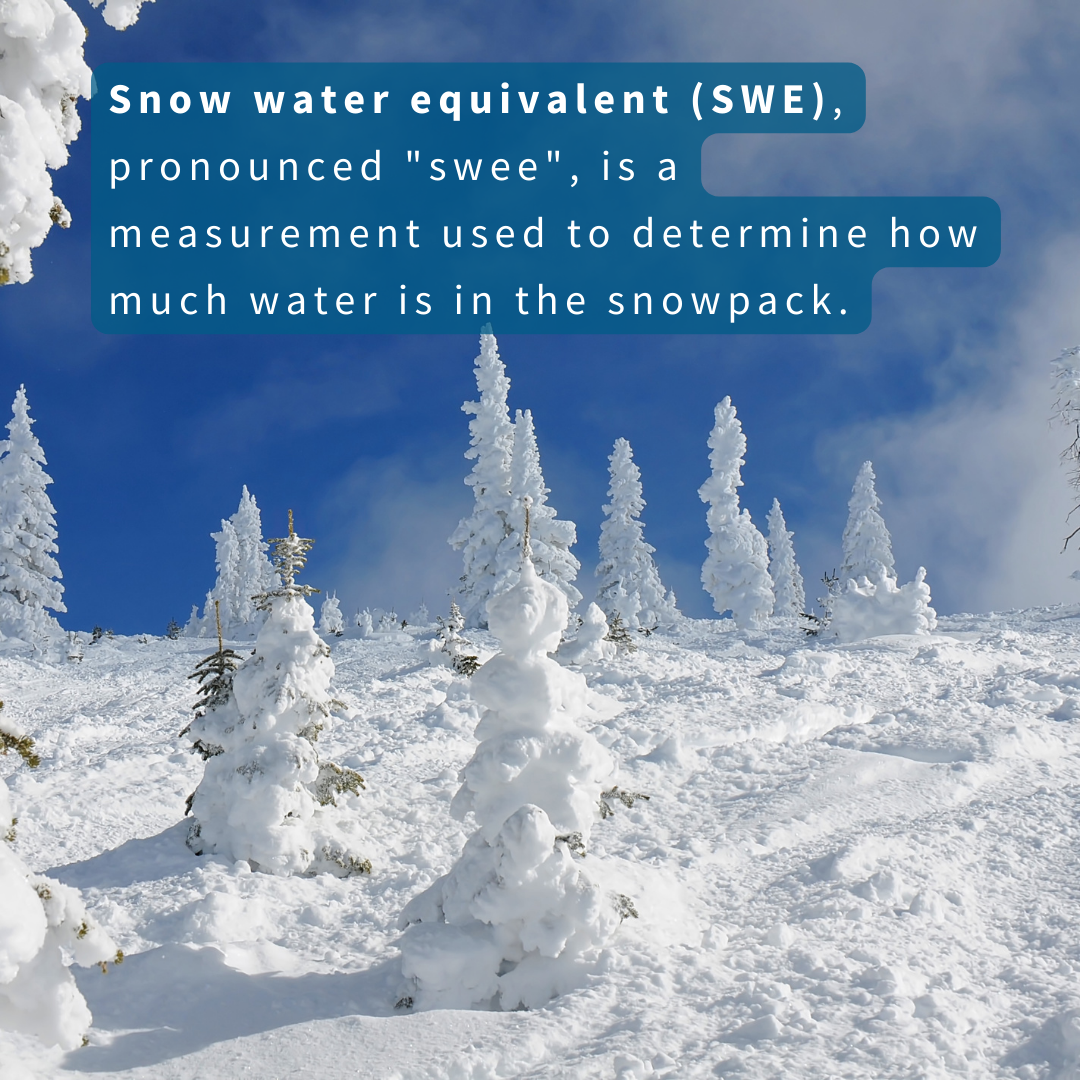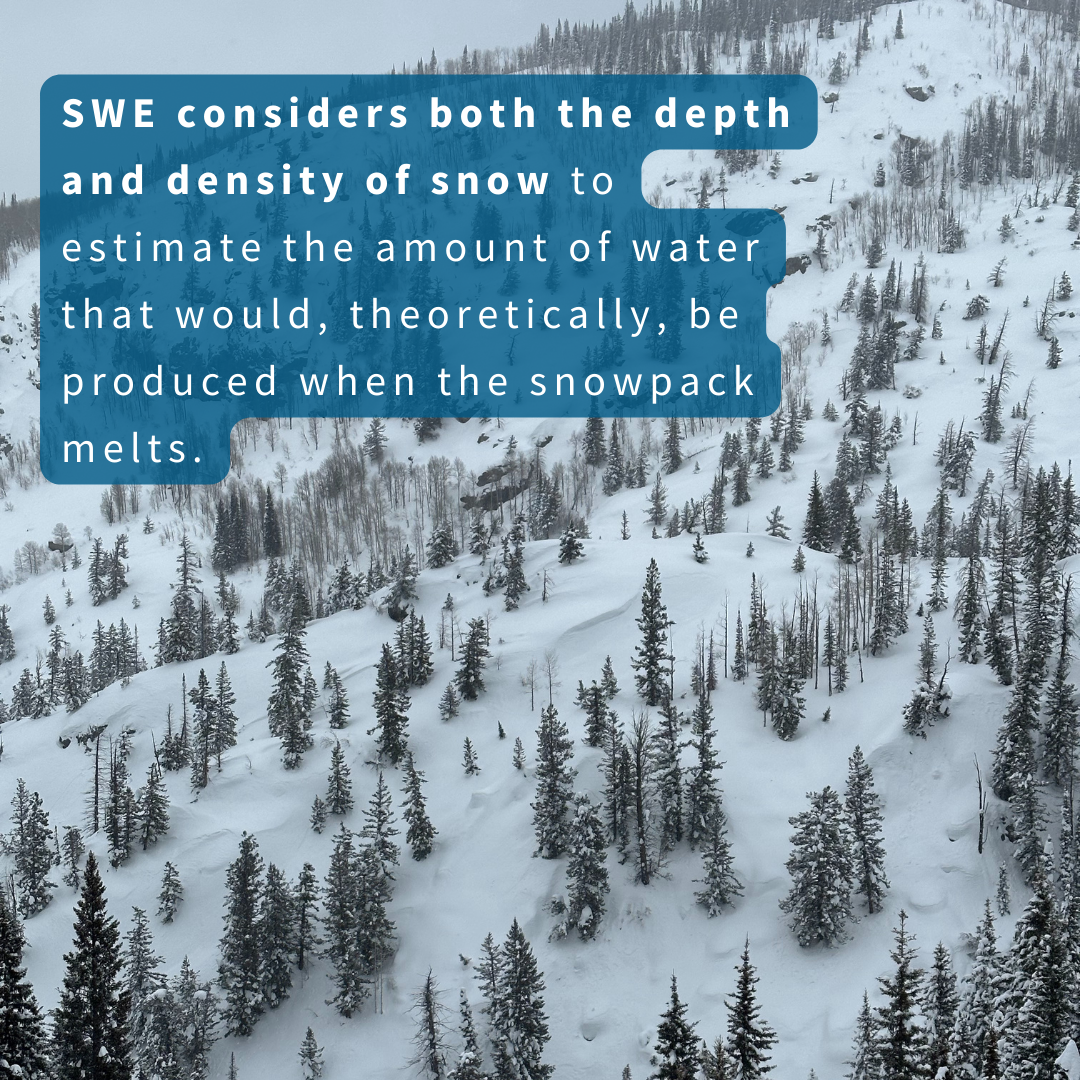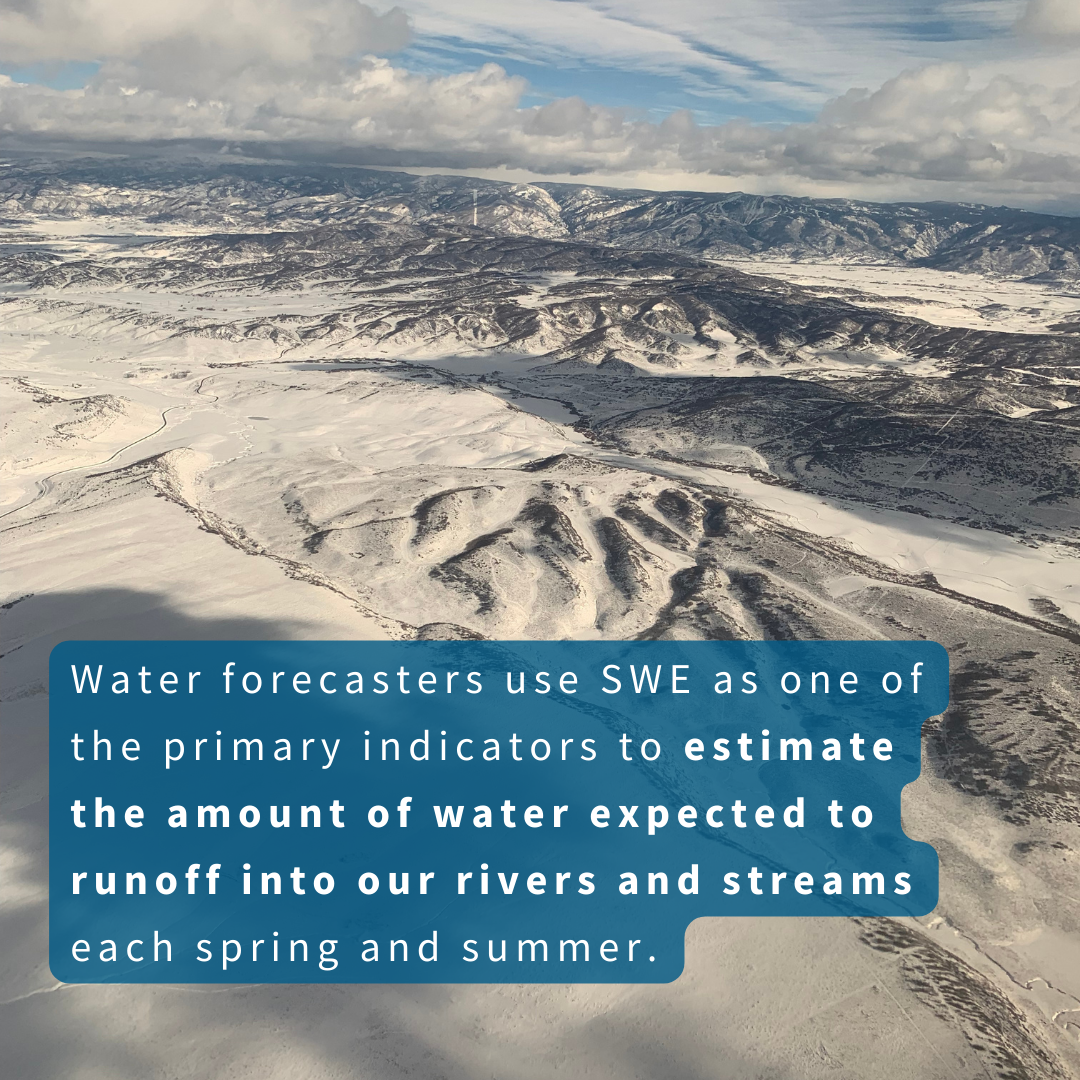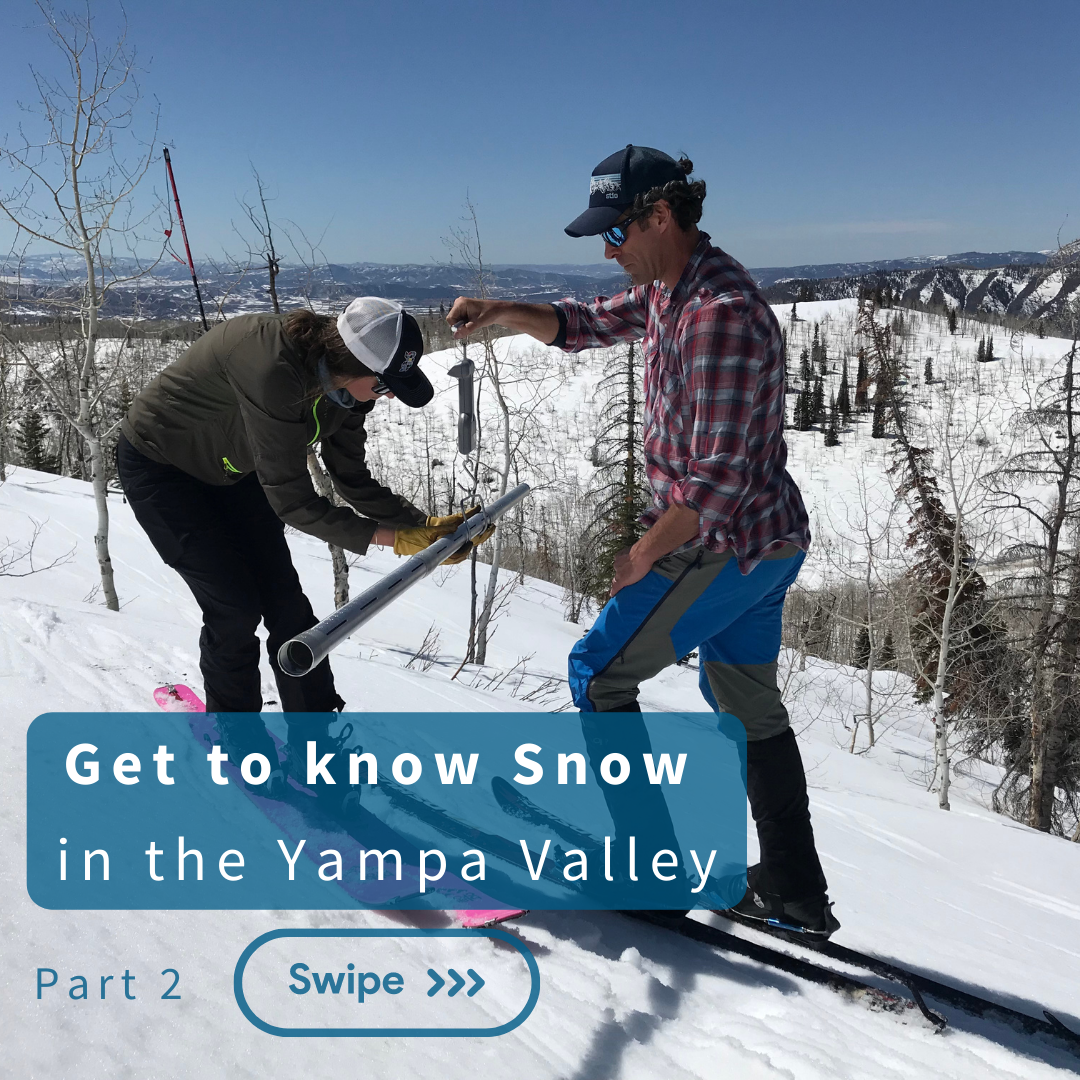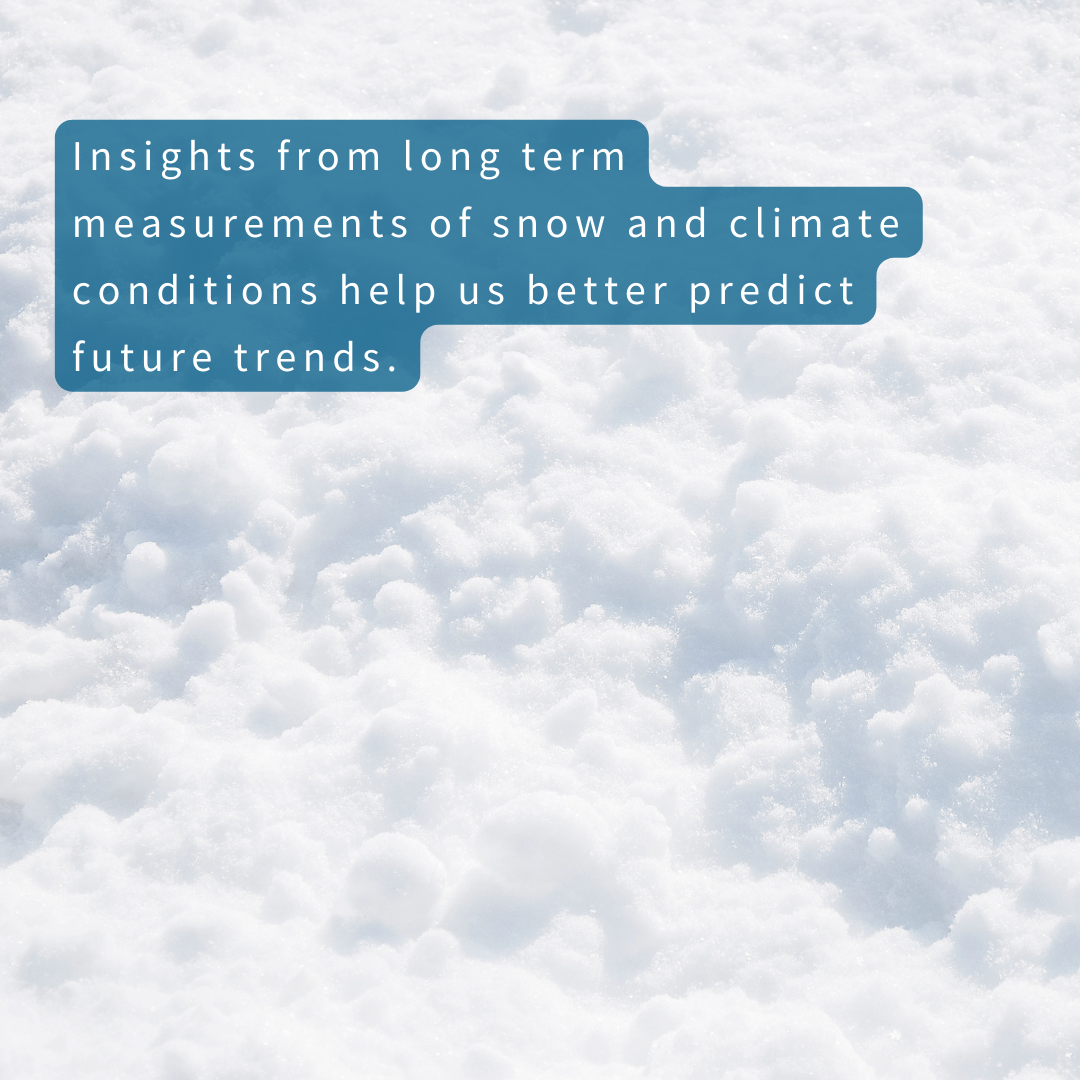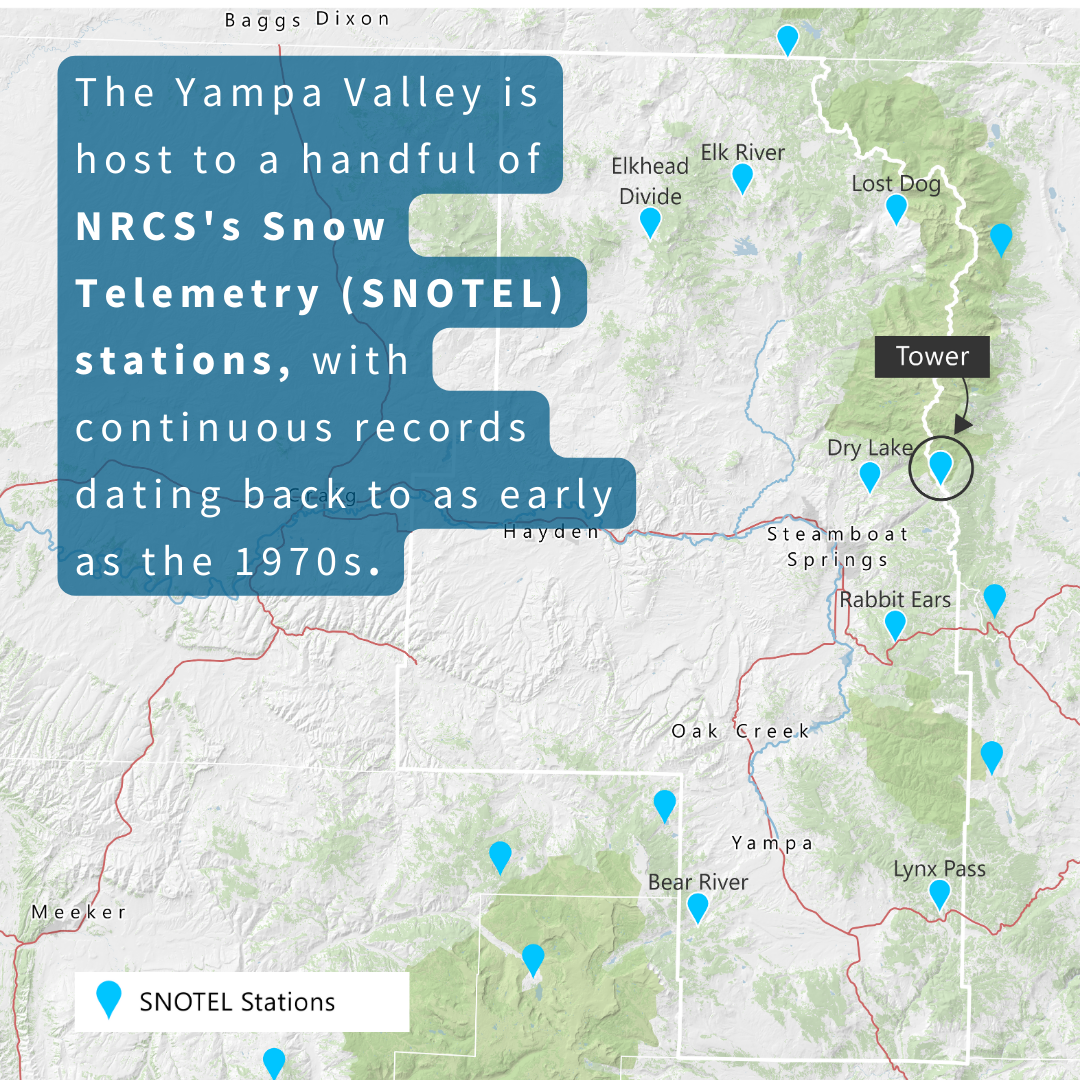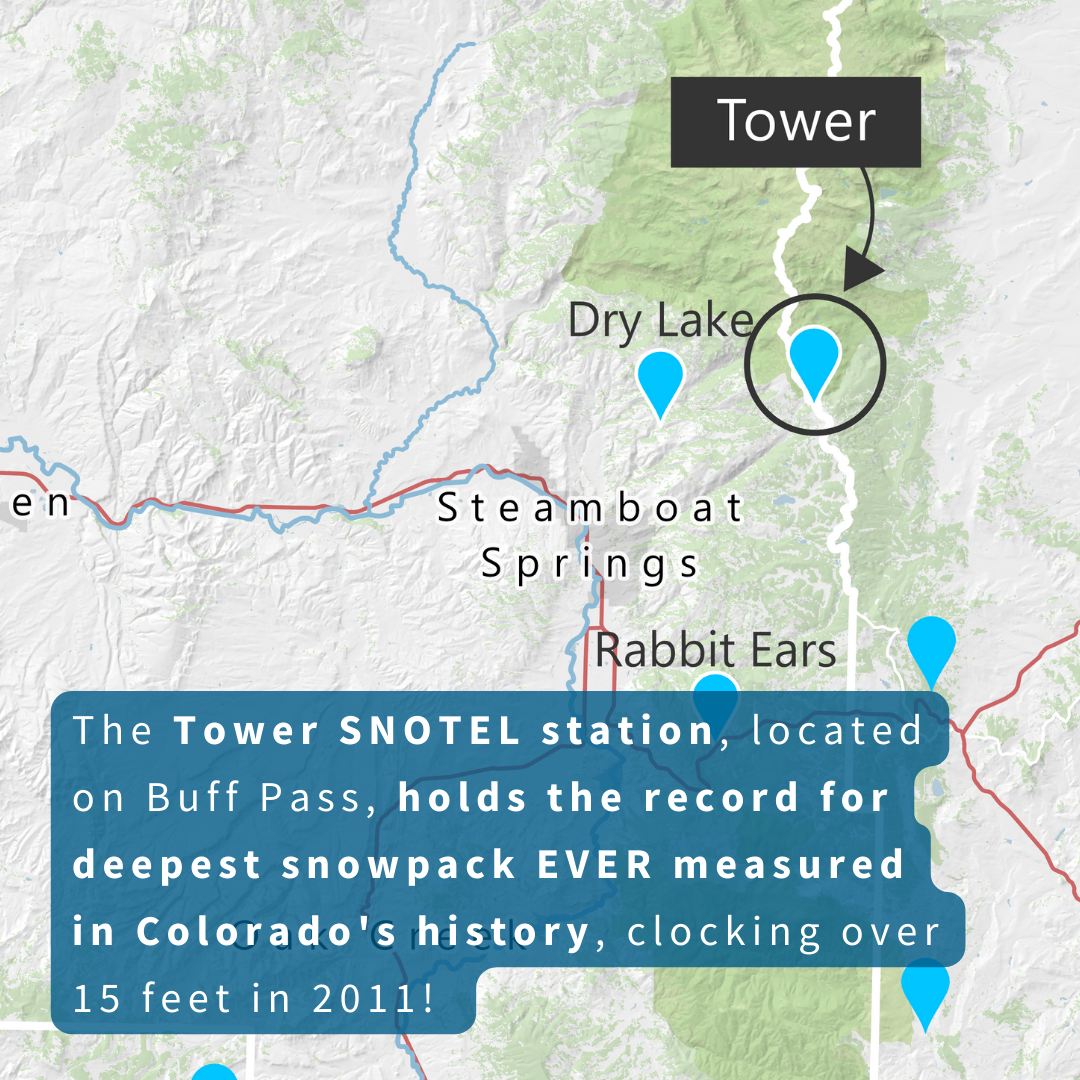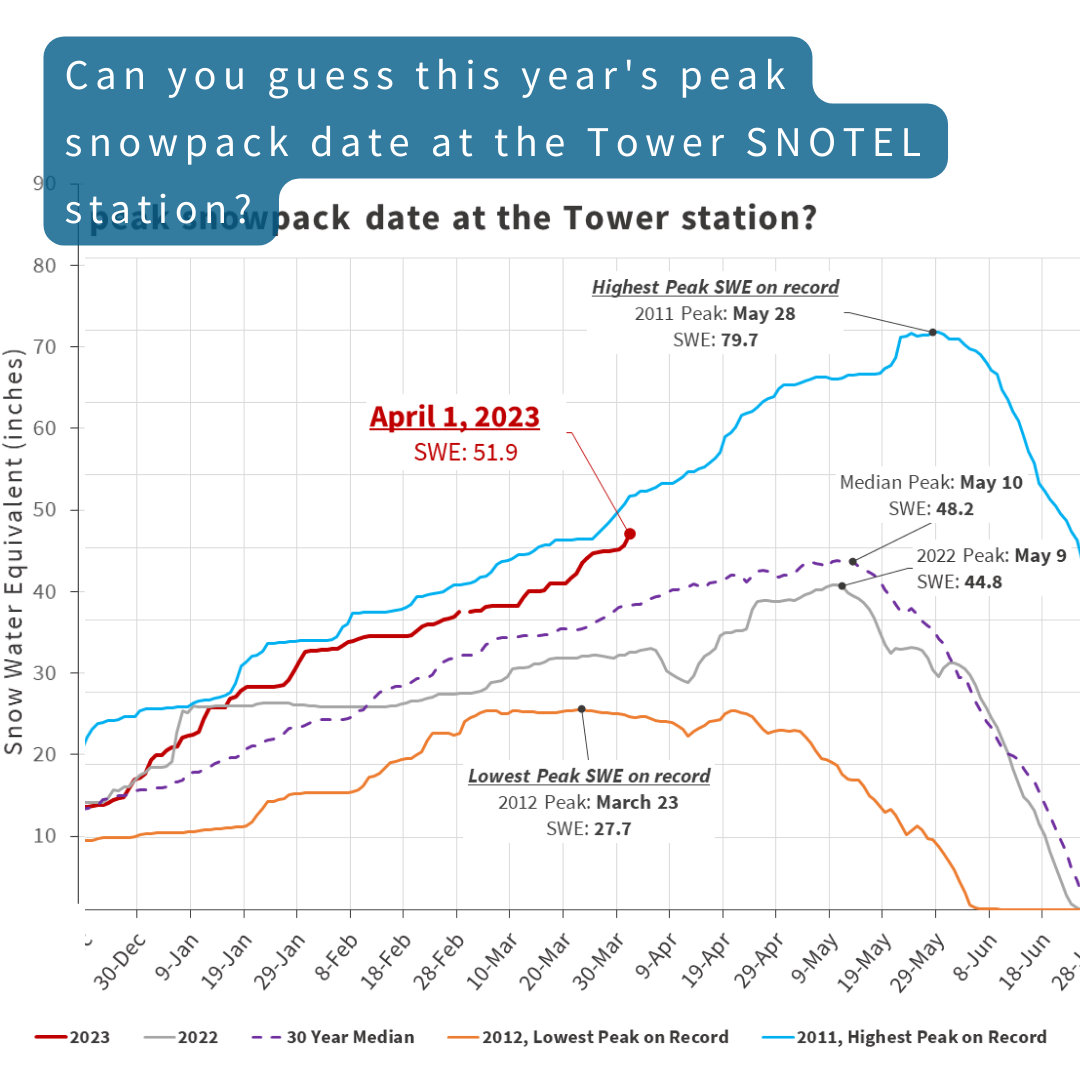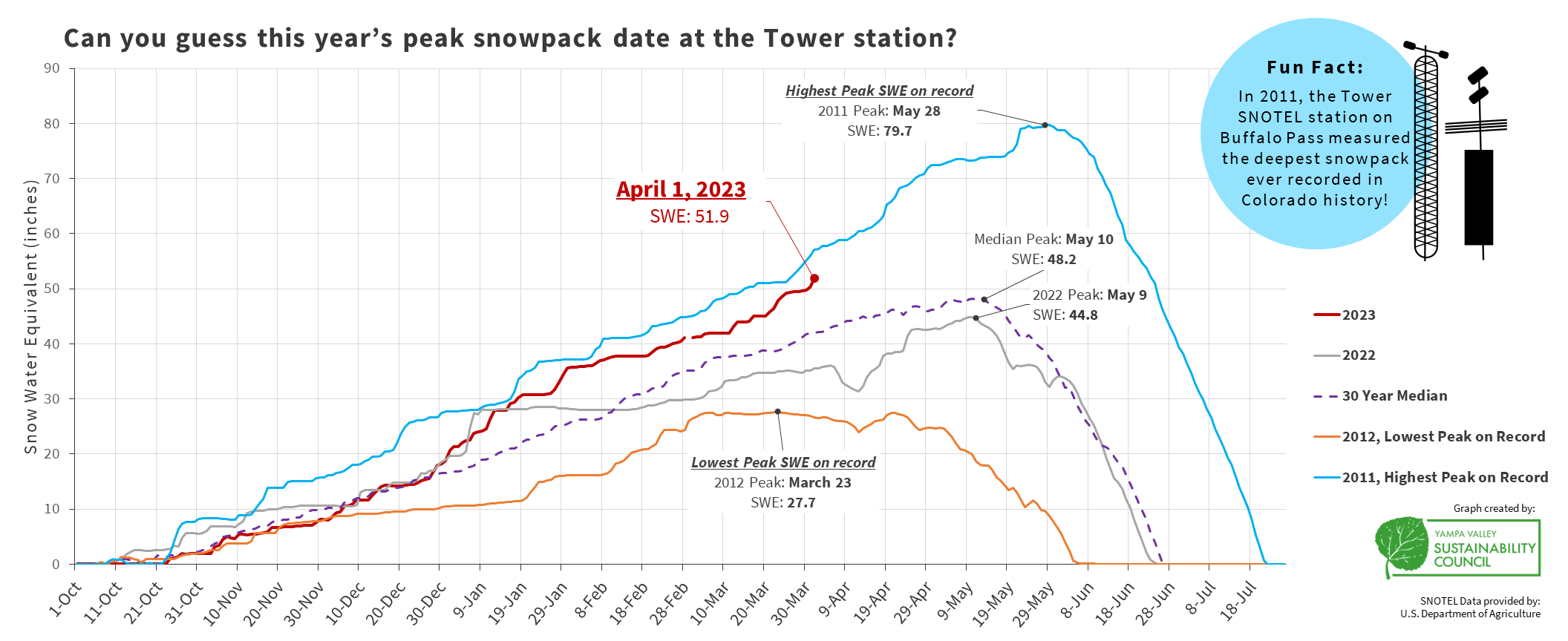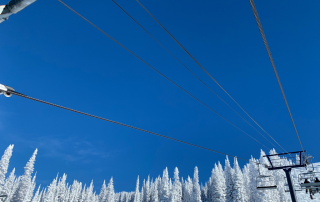Get to Know Snowpack
In the Yampa Valley
In the Yampa Valley and throughout Colorado, we get the vast majority of our water from snow.
The amount (depth) of snow the Yampa basin receives during the winter is one important indicator of how much water we will have in our streams and rivers the following spring, but not all snow is the same in terms of the amount of water it provides.
One way to assess snowpack is by looking at its snow water equivalent (SWE). SWE, pronounced “s-wee”, is a measurement used to determine how much water is in the snowpack. Peak SWE is the date during the year when the snowpack reaches its maximum SWE. The timing and magnitude of peak SWE is used to estimate the amount of water expected to runoff into our rivers and streams during the spring and summer months. Our regional water and resource managers use these values to plan for water use decisions related to agriculture, recreation and flood management.
Snow water equivalent (SWE)
SWE, pronounced “s-wee”, is a measurement used to determine how much water is in the snowpack
Peak SWE
The date during the year when the snowpack reaches its maximum SWE.
Learn more about SWE and the important role it plays in our snowpack and community:
Community Challenge:
Can you guess this year’s peak snowpack date?
To kick off the ‘Get to Know’ series, we are hosting a community challenge to guess the peak snowpack date at the Tower SNOTEL station on Buffalo Pass. SWE is one of the many variables collected at SNOTEL stations by the USDA Natural Resource Conservation Service. Use the below chart to learn about past SWE patterns and guess this year’s peak at the Tower station!
All entries for the correct or closest to correct date will be entered to win a raffle. Submit your answer at the link below, the contest closes on April 30.
Use the above graph to learn about past SWE patterns and guess this year’s peak at the Tower SNOTEL station! The graph compares a few years of snowpack trends at the Tower station. The vertical axis shows snow water equivalent (SWE) magnitude in total inches, indicating how much water the snowpack is holding. The horizontal axis points to the corresponding date and helps us identify the date where the maximum, “peak” SWE; note that the shape of these trends are indeed reminiscent of a mountain peak!
The blue line follows SWE throughout 2011, when it measured the highest peak SWE value on record on May 28. In orange, the values for 2012, just one year later, measured the lowest peak SWE value on record on March 23. We can use patterns from these remarkable years, along with the 30-year median and 2022 peak dates to give us insight on what our SWE magnitude and timing will look like this year.
Get to Know Snowpack Video
In a snowmelt dominated region like the Yampa Valley, snow is a major source of water. Even after a record winter like the 2022-23 season, trends of climate change are long-term, we are getting hotter and drier.
Join us in a discussion with Kent Vertrees, long time Recreator and Outdoor Educator in Northwest Colorado, to learn about the importance of understanding long-term trends in our snowpack from the recreation perspective.
This video is a part of YVSC’s new “Get to Know Climate” series. Follow along to learn more about climate in the Yampa Valley from local experts and community members.
Read Our Blog Posts:
Get to Know: Snowpack in the Yampa Valley – Part 2
Nicole Pepper, Internship Program Manager & Geospatial Analyst | May 1, 2023It seems like
Get to Know: Snowpack in the Yampa Valley
This month, YVSC is pleased to introduce our new ‘Get to Know Climate’




